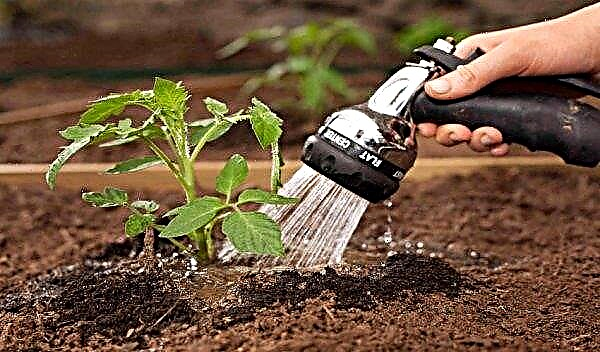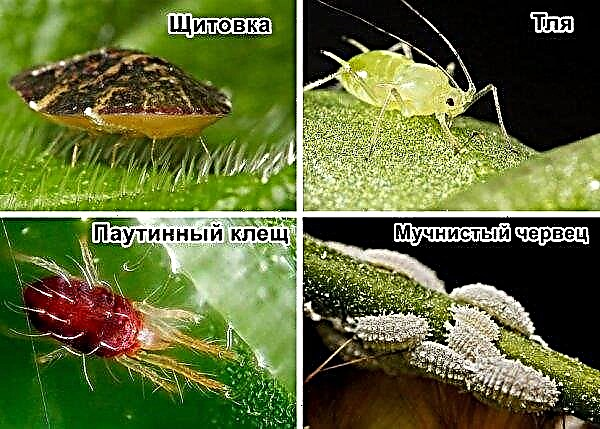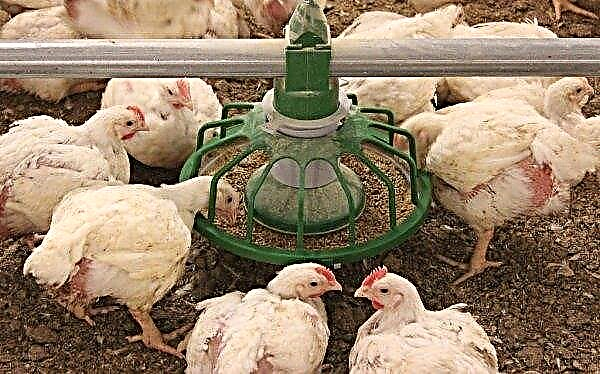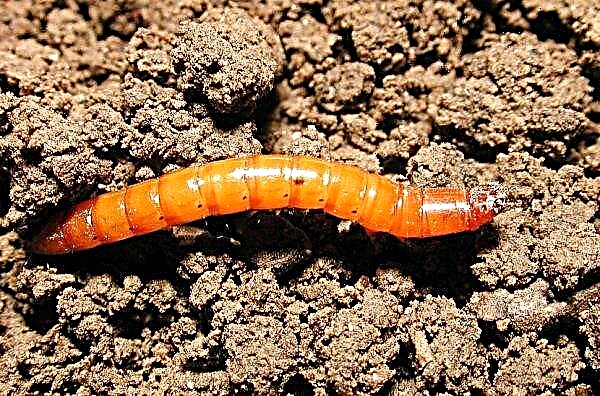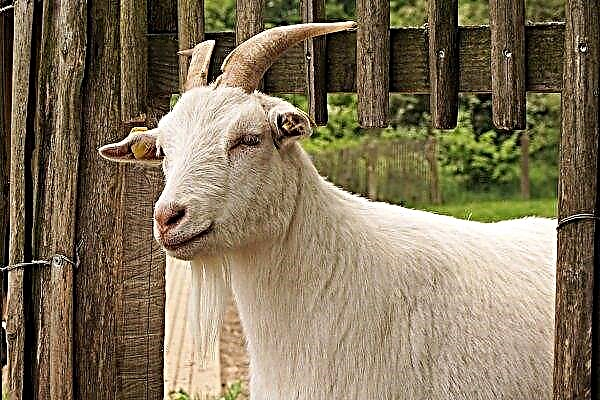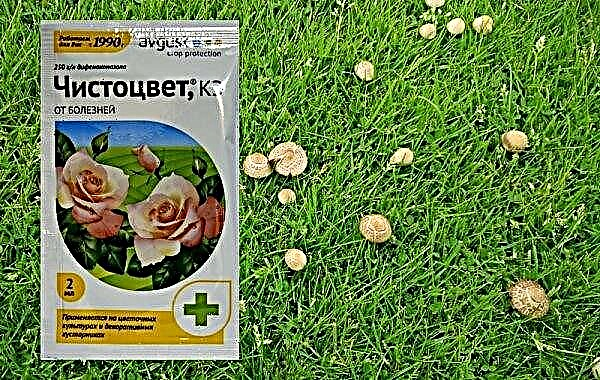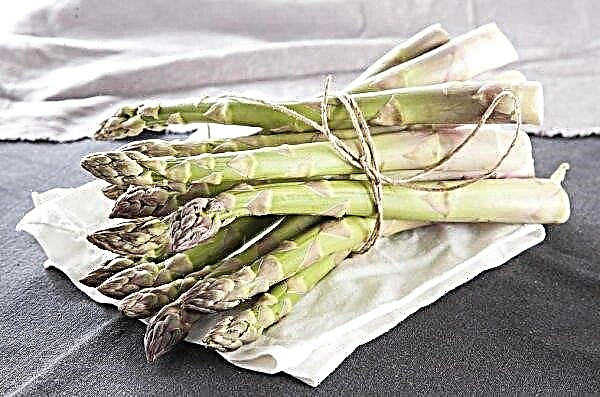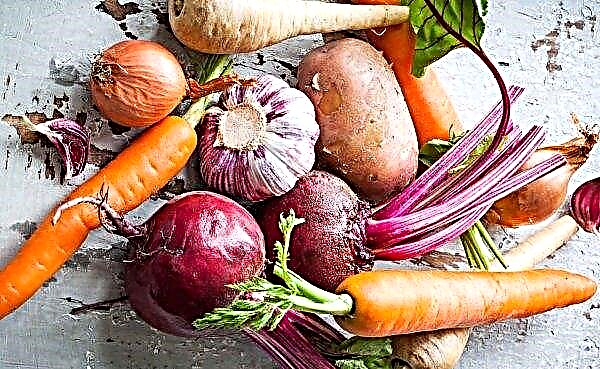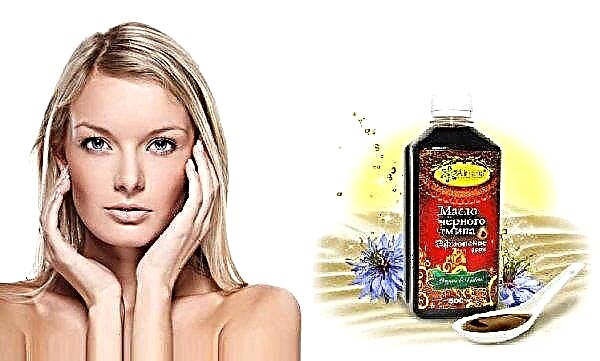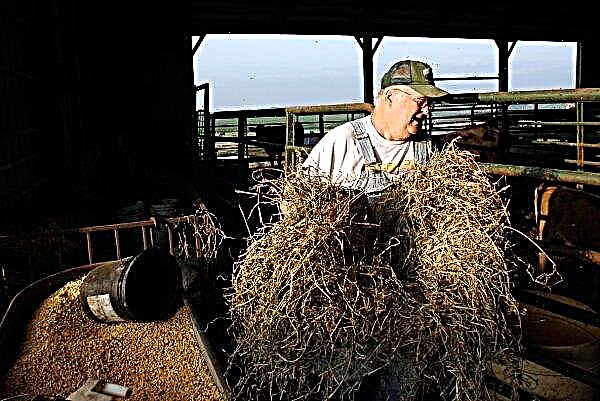To grow a stable potato crop without fertilizers, paying a minimum of attention to planting, is the dream of most vegetable growers. One of the varieties unpretentious to the growing conditions is Chugunka, which you can familiarize yourself with in this article.
History of cultivation of the variety and regions of its cultivation
Cast iron is the fruit of the work of folk breeders; there is no information about potatoes in the register of selection achievements. There is also no exact data about the author, the date the variety appeared; according to unverified data, one of the parent varieties is Sineglazka.
The variety won the love of summer residents and owners of small plots of land with its unpretentiousness. Potatoes are recommended for temperate regions and for southern regions.
Did you know? According to the fact from the Guinness Book of Records, the world's largest potato tuber weighed 8 kg.
Characterization and description of the variety
An early ripe, drought tolerant variety attracts the attention of gardeners with both appearance and productive characteristics.
Description of the bush and root crops
The bush is compact in shape, from 50 cm to 70 cm high, with a powerful root system. The stems are strong, straight, leafy. The leaf plates are dark green, streaked with veins, the edge of the leaf is wavy. During flowering, forms a corolla of lilac-purple baskets.

Tubers with a smooth and even peel without dents, weighing 100–130 g. The shape of the potato is an elongated oval, the skin color is purple. The pulp is white-yellow, possibly a violet blotch. It is used as a table variety, has a great taste, with an average amount of starch up to 17%.
Productivity
From the emergence of seedlings to ripening, 70–75 days pass. Under each bush, 6–10 potatoes are tied. On poor soils, the average yield is about 100 kg / ha, on nutrient or enriched soils up to 200 kg / ha.
Disease resistance
The variety is highly resistant to viral diseases, bacterial rot (including root neck), and cancer. It is rarely affected by late blight, bugs (nutcracker, wireworm, Colorado).
Did you know? The picture of the artist from the Netherlands by Van Gogh "Potato Eaters" is considered one of his darkest masterpieces. Until now, it causes controversial reviews from critics and ordinary people.
Pros and possible disadvantages of the variety
- The main advantages of Cast Iron is:
- the ability to grow on any soil (even with poor nutrition, the variety will bring a crop of healthy, salable tubers);
- fast ripening;
- smooth surface of tubers;
- tasty pulp;
- transportability;
- long shelf life (until spring);
- there is no need for frequent top dressing;
- drought tolerance;
- disease resistance.
 The most significant drawback that gardeners respond to is the need to update planting material, as it degenerates rapidly.
The most significant drawback that gardeners respond to is the need to update planting material, as it degenerates rapidly.Agricultural technology planting potatoes
High yield can be achieved by cultivation on fertile soil. Litter shows the best results in warm climates.
The best place to land
The drought-resistant variety does not tolerate waterlogging, so the proximity of underground sources, at least 1.5 m from the surface, is excluded. It is better to choose a place even or on a small slope so that there is no accumulation of moisture. Ideally, there should be protection from shrubs from strong, gusty winds around the perimeter of the plot. Lighting should be most of the day.
The timing
The landing date may vary slightly in different regions: the end of April or the beginning of May. The main condition is that the soil is warmed up to + 10 ... + 12 ° С.
Ground preparation and quality
Cast iron can grow on sandstones and loams, develop on poor soils. However, to obtain a better crop, it is recommended to add 4-7 kg of humus and 400 g of wood ash to the soil during autumn preparation. The acidity for potatoes is preferably weak or neutral in the range of 5.5–6.8 pH.

Crop rotation
According to crop rotation rules, planting potatoes in the same place for more than two consecutive years is not advisable: it is fraught with disease.
Good predecessors for culture will be:
- meadow grasses and cereals;
- gourds;
- early vegetables (radishes, zucchini);
- root crops (carrots, beets).
Important! Potatoes should not be planted after wild strawberries, tomatoes, eggplant and sweet pepper. Crops are subject to the same diseases and pests.
Germination of planting material
A month before the procedure, the seeds are removed from the store and sorted. Those suitable for planting are etched in boric acid or Fitosporin-M. After this, the material needs to be sprouted, for which it is placed in moist wood sawdust, in a warm place.
Landing technology
During normal planting in the ridge, a distance of 30 cm is left between the bushes, 60 cm between the rows. Planting depth Cast iron up to 12 cm. Many vegetable growers use alternative planting methods, for example under straw. The advantage is that you do not need frequent watering, top dressing, you can forget about hilling. But there is a significant drawback - the material attracts rodents and slugs.

Care Features
Leaving consists mainly in controlling the cleanliness of the soil and hilling.
Weed control
Throughout the season, you need to monitor the soil: there should be no crust on the surface, for this, loosening is carried out. Weeds are removed so that there is no risk of the appearance of fungi or insects and the potatoes are not inhibited by particularly aggressive specimens.

Hilling is one of the important care procedures, thanks to it, the fruits are not exposed to ultraviolet radiation. If the tuber is not covered by soil, it will pick up solanine from the sun, which will make the flesh bitter. Therefore, while hilling the bush, it is necessary to form a high ridge, covering the bare stems.
To maximize the preservation of moisture in the soil, as well as to protect the roots of the plant from overheating, after cleaning the soil, it is mulched. As mulch, sawdust, peat, mowed grass are used.
Watering and fertilizer
In a season with normal weather conditions and enough rain, the Iron does not need watering. If the summer was dry, watering is carried out after planting in 2-3 weeks, during flowering and after it.
Important! If the summer is rainy and damp, it is advisable to dust the plantings with wood ash to prevent fungal diseases.
Fertilize potatoes 1-2 times a season, it is enough nutrition laid in the autumn digging. During the flowering period, a root liquid top dressing is carried out with potassium sulfate and superphosphate in a proportion of 30 g / 10 l of water. Under the bush, spend 500 ml of solution.
Ways to control pests and diseases
Cast iron is a surprisingly problem-free variety, if you keep the soil clean in the garden. An exception may be in wet weather, when there is a high risk of developing fungal disease late blight. The disease affects both the tops and tubers, appearing in black stripes and spots with fleecy.

Prevention of the disease is seed dressing, soil cleanliness before planting and during cultivation, dusting plants with ash. In the treatment of fungicides, copper sulfate 1%, Oksikhom, Fitosporin-M are used. The last drug is a biological agent, it can be used at all stages of development.
Insects bypass Chugunka, but if force majeure occurs, they use insecticides, for example, Bazudin, Apache. Processing is carried out in dry, calm weather, preparations are diluted according to the instructions.
Harvest recommendations
The cast iron has a dense skin, so cleaning can be done both manually and mechanized. It is recommended to collect potatoes at the end of the ripening period, it is more saturated with taste, less watery. Before laying in the cellar, the tubers are thoroughly shaken from the soil and dried.
The cellar must be pre-whitened, have ventilation, be dry. Tubers are sorted by size, laid in boxes, overlapping layers with paper. Storage temperature 0 ... + 2 ° C, humidity about 85%. Under such conditions, the crop is stored for 6–8 months, and the tubers have a 95% shelf life.
The iron is perfect for growing on small farms. The variety does not take much time to care. Smooth fruits do not lose shape during cooking; during cooking, the flesh does not darken.

